Hearthstone
Kael'thas and the Blood Elves - Traversing Azeroth
Learn the story behind Kael'thas Sunstrider and the race of blood elves, from their origins to their tragic losses and healing restorations, as well as the key role they played in the fight for Outland.

The blood elves are descendants of exiled night elves who refused to abandon the practice of arcane magic after the War of the Ancients. Making their home in the north of what would be known as the Eastern Kingdoms, they rule from their capital city of Silvermoon.

Silvermoon City in the enchanted land of Quel'Thalas
In the ancient night elf empire, the many nobles, known as the Highborne, were accomplished sorcerers who drew on the Well of Eternity to fuel their arcane magic. The most powerful of these sorcerers was Queen Azshara, a narcissist who was obsessed with growing her power and pummeling the depths of the Well’s potential. By her order, the Highborne performed reckless arcane experiments in a quest to advance their culture and technology. Instead, the constant use of such powerful arcane magic sent ripple through the Twisting Nether and attracted the attention of Sargeras and his demonic Burning Legion. Sargeras had been searching for Azeroth’s location for eons, and now it was his to conquer. Thus began the first demon invasion of Azeroth in the War of the Ancients.
Queen Azshara as a night elf.
While many of the Highborne sided with the Burning Legion, several defected to join the largely-druidic rebellion faction of the night elves, led by Malfurion and Tyrande. After the war was over, and the Well of Eternity destroyed, these surviving Highborne were forbidden from practicing arcane magic by the druids, under penalty of death if they disobeyed. For centuries, they attempted to refrain from the arcane, but the draw was too strong. Eventually, a large group of Highborne, led by Dath’Remar Sunstrider, decided to openly defy the rule and claim what they believed to be their arcane birthright. Unwilling to sentence so many to death, the night elves decided to instead exile the defiant Highborne from Mount Hyjal, cutting them off from the second Well of Eternity that Illidan had created and the World Tree that grew over it.
Assembling a great fleet of ships, the exiles, led by Dath’Remar Sunstrider, left the continent of Kalimdor and sailed beyond the Maelstrom to the Eastern Kingdoms. Removed from the source of magic they had become dependent on, they began to shrink and their skin lost its purple color. As they searched for a new home, they became trapped in blizzards and started to die of both starvation and ambushes from the native Amani trolls. At last, the weary exiles found a lush forest at a nexus of magical arcane ley lines. On an island that would be known as the Isle of Quel'Danas, Dath’Remar Sunstrider then used a small vial of water from the Well of Eternity he had stolen from Illidan to create a new fount of magic to sustain his people. This well would become known as The Sunwell, and it would become the center of a new civilization for the self-styled “high elves”. In order to hide their use of arcane magic, and avoid unwanted attention, they constructed large Runestones around their borders to create a protective magical barrier.
The guards and protectors of Silvermoon
Inside the magical barrier, the new kingdom of Quel'Thalas was altered by the elves' magic as they merged the natural landscape with their own architecture and enchanted the weather to be a land of eternal springtime. The high elves also domesticated two native species which would serve as their cultural and racial mounts. The first was the dragonhawk, a fierce fire-breathing predictor which had also been tamed by the native Amani trolls.
The other domesticated creature would be known as the Hawkstrider, a colorful variant of the Tallstrider family of birds. Valued for their trustworthiness and speed, these birds were said to "embody the inherent splendor of the forests within the blood elven kingdom" and were known to be fierce protectors if their master was ever attacked.
A Quel'Thalas Hawkstrider and some of its less flashy relatives
For seven-thousand years, the decedents of Dath’Remar Sunstrider would lead the high elves in their land of Quel’Thalas through times of peace and prosperity, only broken by the occasional war with the trolls. They formed alliances with the growing human kingdoms, sharing their knowledge of magic to create the first human mages. All of this came to an end in the Third War when the death knight, Arthas Menethil, led the undead Scourge on a destructive march against Silvermoon that would forever scar the land. Aided by a high elf traitor named Dar'Khan Drathir who coveted the power of the Sunwell and title of Grand Magister for himself,, the Scourge neutralized the protective Runestones and slaughtered the majority of the high elves and raising them into undeath. Notable among these was the Ranger-General, Sylvanas Windrunner, whom Arthas raised as a banshee to use against her own people. Arthas personally dueled and killed the current high elf king, Anasterian Sunstrider, and corrupted the Sunwell by using it to resurrect the mage Kel'Thuzad as a lich.
Anasterian’s son, Kael'thas Sunstrider, had been studying in Dalaran at the time of the invasion, but he quickly returned home to lead the remnants of his exterminated people. The dark energies of the corrupted Sunwell were already corrupting and killing off the survivors, forcing Kael’thas to destroy it. Although obliterated and unusable, some remnants of the Sunwell’s magic remained. These were collected by a disguised red dragon named Korialstrasz, who formed them into the guise of a young woman named Anveena Teague.

So, yeah. This woman is actually a human construct of a manifestation of magic created by a dragon that gained sentience and began to live as a normal human. Warcraft lore can get just a bit weird and random sometimes.
Once again deprived of their required magical sustenance, the elves began to suffer from withdrawal. No longer would they call themselves high elves. Instead, those who followed Kael’thas renamed themselves Sin’dorei, or blood elves, in honor of their slaughtered comrades. To fill the holes of leadership, Kael'thas named Halduron Brightwing as the new Ranger General and leader of the Farstriders to replace Sylvanas and named Lor'themar Theron as Regent Lord in charge of looking after the city and people. Kael’thas led 15% of the remaining population in a joint effort with the Alliance against the Scourge in the fallen city of Lordaeron. However, they fell victim to the bigotry of a human general named Garithos who sent them on suicidal missions to rid himself of a people he believed had wronged him in the past. These blood elf forces were rescued by naga under the command of Lady Vashj, who offered Kael’thas a way to cure his people’s magic addiction if they joined her in serving her master, the now-demon hunter Illidan Stormrage.
Fun fact: This dude had a crush on Jaina Proudmore and a rivalry with Arthas over her when they were young. He soon had much bigger problems to deal with, though.
Upon joining Vashj and Illidan in the conquest of Outland, Kael’thas and his forces learned how to siphon magic from demons, among other sources. When Illidan set out to kill The Lich King in the frozen wastes of Icecrown, the blood elves followed, only to be beaten back by the Scourge as Kael’thas and Illidan were bested by Arthas and forced to retreat. After this battle, Arthas raised several of the fallen blood elves into undeath, creating the San’layn (or Darkfallen), vampiric undead who specialized in draining blood.
Yep, vampires are a thing in Warcraft, just in a limited and obscure fashion.
Other fallen blood elves would also be risen to join the Scourge over the years, with many becoming powerful death knights under the Lich King’s control.
Meanwhile, back in Silvermoon, the efforts continued to reclaim and rebuild Quel’Thalas. Although slow to start, they were highly accelerated when messengers brought messages from Kael’thas, teaching the practice of magic-siphoning to the rest of the blood elf people. Newly empowered, they rebuilt much of their kingdom and set about searching for allies. While they had previously belonged to the Alliance, they now felt abandoned by the faction’s lack of aid. Instead, the blood elves found unexpected allies in the form of the newly-freed Forsaken undead led by Sylvanas, the two races joining forces to fight back the Scourge and retain their mutual freedom. Through this connection, the blood elves were eventually welcomed into the Horde under the Warchief, Thrall.
While the practice of magic-siphoning had saved the blood elves, there were those who couldn’t overcome their magic addiction. These poor souls overindulged in magical sources to the extent that it deformed them and often drove them to insanity, gaining the name “Wretched”.
Don't do magic drugs, kids, or you could end up like this.
Additionally, Kael’thas had sent another gift from Outland, a captured naaru named M’uru, from whom elves could siphon the powers of the Light. This gave rise to a new order of Paladins called the Blood Knights under the command of Lady Liadrin. Normally, the power of the Light was obtained through faith and devotion, but many elves had lost their faith and renounced their holy vows after suffering such pain from the Scourge without salvation. Using the power of the naaru, Grand Magister Rommath and Astalor Bloodsworn managed to manipulate the holy energies and allow the Blood Knights to wield the Light by sheer force of domination. While Halduron Brightwing was opposed to their creation as unethical to the naaru, his objections fell on depth ears.
Back in Outland, Kael’thas’s forces had split into various factions. The prince and his loyalist forces, known as the Sunfury, focused their attentions in Netherstorm, a location filled with mana and magic to siphon. They gave special attention in their attempts to conquer a dimensional ship known as Tempest Keep.
Kael’thas, however, had lost his faith in Illidan and had instead turned to the demon Kil’jaeden for power and salvation for his people. Becoming ever more callous and tyrannical, his actions drove several blood elves away to form the Scryers, a faction dedicated to serving the Naaru and rebuilding the ruined Shattrath City. This faction included many of the brightest scholars and magisters, and was a great loss for Kael’thas.
Other blood elves were recruited by Illidan himself to serve as his top secret weapon, the demon hunters. Able to bind themselves to demons and harness the power of fel magic without being controlled by it, many did not survive the training or were driven insane. Those who survived were sent on secret missions to destabilize the Burning Legion on its own worlds.
While still separated from their kin in Outland, the blood elves of Silvermoon would soon be reunited with those from Kael’thas’s expedition after surviving an attack from their old enemies, the Amani trolls. The Amani leader, Zul'jin, and Hex Lord Malacrass attempted to bind the spirits of their loa to empower champions in retaliation for the Horde accepting the blood elves into their ranks. They were defeated by adventures in their city of Zul’Aman. Following this encounter, many blood elves traveled to Outland with their Horde comrades after the Burning Legion staged an invasion to lure the forces of Azeroth into a fight with Illidan, turning their enemies against each other.
With the Alliance and Horde now fighting in Outland, Kael’thas’ forces in Netherstorm were gradually dismantled and his true allegiance to the demons uncovered. Defeated and left for dead, he survived the raids on his stronghold of Tempest Keep and determined to reignite and use the Sunwell to summon Kil’jaeden into Azeroth.
Two of Kael'thas's forces guarding Tempest Keep. Al'ar was his immortal pet phoenix with the power to rise from its ashes. Solarian was a blood elf mage whose power over the void couldn't save her from the Alliance and Horde.
Returning to his homeland, he and his felblood elves—blood elves infused with demonic fel magic—attacked Silvermoon and stole the Naaru, M’uru and Anveena Teague, who had only just been revealed as the incarnation of the Sunwell’s magic. Taking the two prisoners to Sunwell Plateau to be drained of their energy and fuel Kil’jaeden’s portal, Kael’thas’ forces wove their magic into a ritual to summon the demon lord. Drained of his light, the naaru changed into a void creature that Kael’thas used as a sort of guardian.
In response, Lady Liadrin repented of how she and the Blood Knights had forcibly drained holy energy from M’uru. Pledging the Blood Knights to end Kael’thas’s corruption and restore Silvermoon, she united with the Scryers and draenei from Shattrath to form the Shattered Sun Offensive.
Making his final stand in the Magisters' Terrace on the Isle of Quel'Danas, the location of the Sunwell, Kael’thas fell at last, a broken and twisted shadow of the once-noble prince.

To be fair, he was right when he said it "wasn't a phase" and lived it down until he died thirty minutes later.
Aided by the blue dragon, Kalecgos, the Shattered Sun Offensive launched their final assault on Sunwell Plateau to drive back the remainder of Kael’thas’ forces and the demons they had summoned. Facing powerful demon commanders and fel-corrupted blood elves, they fought their way to the heart of the Sunwell in time to witness the summoning.
A Hearthstone-original character, Valdris is a felblood elf who likely served under Kael'thus at this time, and somehow survived beyond most of his fellow felbloods.
Ultimately, the Shattered Sun Offensive succeeded in banishing Kil’jaeden back to the Twisting Nether thanks to the sacrifice of Anveena Teague, who gave her life to unleash the full power of the Sunwell’s magic and weaken Kil’jaeden enough for the mortal heroes to deal the final blows. While it appeared that the Sunwell was gone for good, Prophet Velen and Lady Liadrin were able to revitalize it using the last pure remain of M’uru’s holy spark. Now a fount of both arcane and holy magic, it allowed the blood elves to begin overcoming their magical addiction and no longer need to siphon magic, as well as allow the Blood Knights to wield the power of the Light naturally, with no need to dominate it.

Kil'jaeden emerging from the Sunwell shortly before his defeat.
During the campaign against The Lich King, a blood elf mage in Dalaran named Aethas Sunreaver convinced the rest of the city’s mage leaders to allow blood elves into the Kirin Tor and for the Horde to use the floating city as a neutral base. These blood elf mages would take the name of Sunreaver after their leader.
Watch out for that one on the right. Sunreavers have a few bad apples among them.
During this campaign, the San’layn would reemerge as The Lich King’s agents and lead attacks against the Alliance and Horde. Ultimately, their leaders would be killed once and for all in the attack on Icecrown Citadel.
By the time of the Cataclysm, the blood elves had accepted an official change in rulership. With Kael’thas’s death, the Sunstrider dynasty had come to an end. Rather than choose a new king, the burden of leadership was officially passed to the regent lord, Lor'themar Theron. The blood elves also became more active in the Horde, with the ancient order of the Reliquary resurfacing to serve Silvermoon and the Horde with the goal of acquiring powerful magical artifacts for the safekeeping, and to free the elves of their magical addiction for good. They became major rivals with the Alliance-based Explorer’s League.
By the end of the Cataclysm, the leadership of the Horde had changed. With Thrall having retired to focus on his shamanistic duties, the mantle of warchief passed to Garrosh Hellscream. Hungry for conquest, Garrosh used loyal spies among the Sunreavers to steal a powerful magical artifact known as the Focusing Iris and transform it into a mana bomb. With this bomb, Garrosh destroyed Jaina Proudmoore’s Alliance city of Theramore, as well as powerful leaders of the alliance and Kirin Tor who had come to defend it. Among these was Rhonin, the archmage of Dalaran. Devastated, the formally-peaceful Jaina swore vengeance on the Horde and was chosen as the new archmage. There, she exterminated or drove out all the blood elves she could find, claiming Dalaran for the Alliance. This proved to be a huge mistake, as the blood elves were repulsed by Garrosh’s brutality and had entered talks with King Varian Wrynn about rejoining the Alliance. Jaina’s actions, however, drove them back to the Horde.
Aethas Sunreaver, leader of the Sunreaver mages in Dalaran. Driven out by Jaina Proudmoure during the Purge of Dalaran
On the newly-discovered land of Pandaria, Lor'themar led a force of blood elves against The Thunder King, known as the Sunreaver Onslaught with the intention of obtaining titan artifacts from the mogu and guarantee their survival as the Horde moved closer to civil war under Garrosh’s rule.
Ultimately, the chieftain of the Darkspear trolls, Vol'jin, led a rebellion to topple Garrosh in the Siege of Orgrimmar. Lor’themar and his blood elves sailed from Pandaria to Durotar to assist in the fighting, in the end overthrowing the orc tyrant and enjoying far better relationships with Vol’jin, who was appointed the new warchief in his place.
The third invasion of the Burning Legion on Azeroth marked the return of the demon hunters to Azeroth. Although accepted into their factions with great reluctance and suspicion, they nonetheless were able to slowly gain some form of acceptance among their elven people as they demonstrated their dedication to destroying the invading demons on the Broken Isles. One of the major battlefronts on the Isles was the ancient elven city of Suramar, which had fallen under the Legion’s control. Forming an uneasy alliance with the night elves and a faction of high elves that had remained part of the Alliance for all these years, the blood elves marched against the tyranny of Grand Magistrix Elisande and her Legion allies. In the aftermath of the Legion’s defeat, the inhabitants of Suramar, known as nightborne, attempted to join the alliance and night elves, but were rebuffed by Tyrande, who was suspicious of their use of arcane magic. In response, Lady Liadrin reached out and offered membership in the Horde, pointing out the shared struggles the blood elves and nightborne had gone though in facing magical addictions and having a leader betray them to the Legion. Accepting the offer, the two elven races began to form close connections within the Horde.
During the Fourth War, Lor’themar and the blood elves played a major role in leading an assault on their ancient enemy, Queen Azshara. Since the War of the Ancients, Azshara made a pact with the Old God N'Zoth, transforming her and her followers into naga. Trapped in the underwater city of Naz’jatar by a powerful artifact known as the Tidestone, Lor’themar and the other horde members with him joined forces with Jaina and the Alliance to invade Azshara’s Eternal Palace and stop the naga queen’s plans.
The Fourth War ended with Warchief Sylvanas, betraying and abandoning the Horde. Realizing that the position of warchief had to be done away with, the Horde instead formed a ruling council, allowing all its leaders to have a say in matters. With Lor’themar setting an example of strong leadership and the two Alliance and Horde once again at peace, the future of the blood elves looks as bright as the Sunwell itself.
About the Author

Daniel Charland (AKA Goliath the Dwarf) is a newspaper reporter and photographer from Eastern Iowa. He graduated from college in 2020 with degrees in English Literature and Creative Writing. He has a passion for the power of storytelling and hopes to write his own fantasy book one day. Favorite fantasy universes include Middle Earth, the Star Wars galaxy, The Elder Scrolls, and Warcraft.
More Hearthstone Guides
Latest Hearthstone Guides

Best Warrior Hearthstone Decks to Play in Showdown in the Badlands

Best Warlock Hearthstone Decks to Play in Showdown in the Badlands


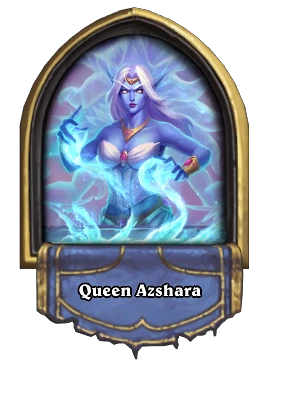

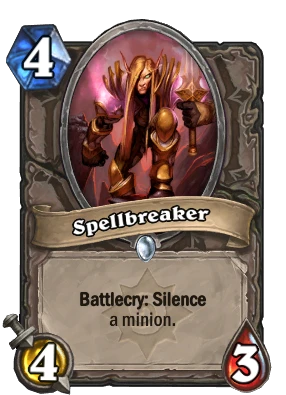


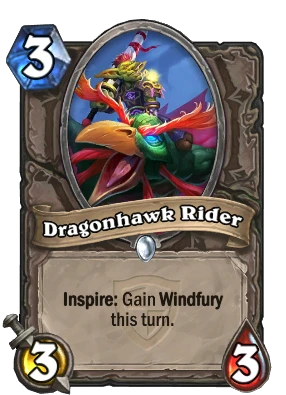



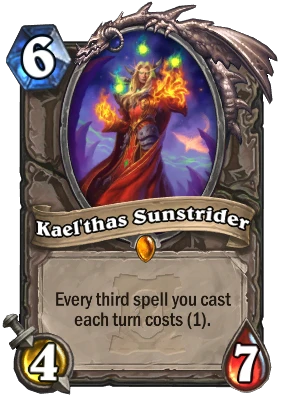








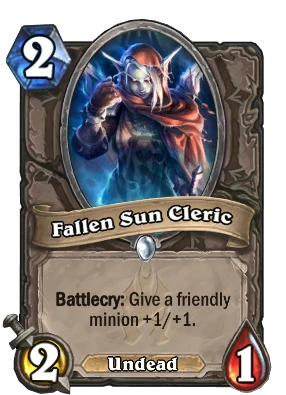

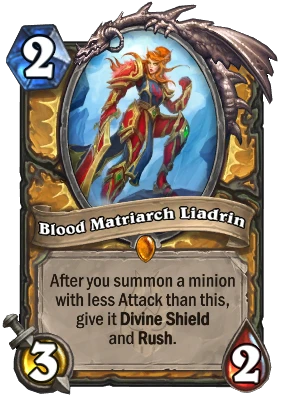

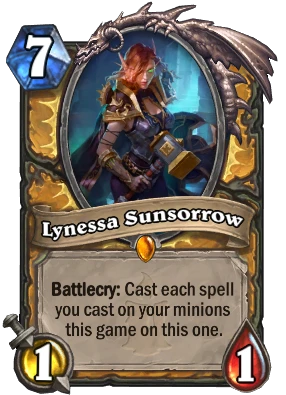























Comments
Another great article to read. Thanks a lot for this.
Great article! I enjoyed it very much, very well written. Thank you for your effort, and keep up the good work...
I love this articles. After playing W3 and reading books, this articles fill the gaps that I don't know because of not playing WOW!
Thanks!
Thank you for stopping to look. :) If you have any requests, let me know here or in the lore forum.
I was thinking (and it must be hard) to write the story behind every basic Hero could be a good thing to read.
We actually already have something like that. This was written up before I joined the team, so it's not in my typical style, but it can still give some good information to tide you over until I get around to covering a related topic. https://outof.cards/guides/162-hearthstone-hero-lore
Nice! Thanks! If I come up with a topic you could write about I'll let you know!
Great write up, man. I really dig reading these types of articles.
Thanks :) That means a lot to me.
Thank you for this article my dude. My internet went down last night and I didn't really know what to do as it was pretty late but I didn't wanted to go to sleep yet. That's when I stumbled upon your article while browsing on mobile. It was a nice read, although I really want to know more details about the 3rd and 4th war now. ;) Didn't pay too much attention to the wow lore after I finished wc3 tft back then, only heard/read about the most important events. Keep it going with these lil' essays!
Sure thing :) Thanks for stopping by. I'm always looking for new topics to focus on, so I'll keep that in mind. For the purposes of this article, I only focused on the parts of the conflicts that directly included or impacted the blood elves-- which wasn't a ton since they have often been kind of overlooked in the game at times-- but there's a lot more that happened in those conflicts which I can talk about or touch on in other articles when it's relevant to the subject. Let me know if you have any specific suggestions related to certain cards you want to learn about.
What?
You will have to expand your train of thought for us to give you any kind of answer :)
i want kil'jaeden legendary!
As do I, lol. Been wanting that one for a long time, actually. From what I've seen, he's also a popular custom card for people to design on HearthCards, so I think a lot of other people are of the same mindeset as us.
Amazing article, as always! Great lore info about some of the seemingly random names of some HS cards (for a person who does not know WOW lore) like Sunfury Protector or Shattered Sun Cleric!
Lady Liadrin has secretly been in the game for years as the Shattered Sun Cleric, biding her time until she could take over the world become a true Legendary :D
Yeah, from back in the days when Hearthstone just reused, recycled, and renamed old art it could get its hands on. So many old cards are improperly named in regards to their art. I wonder if any changes could come for those cards, since Blizzard has already made it clear that it's fine with changing art.